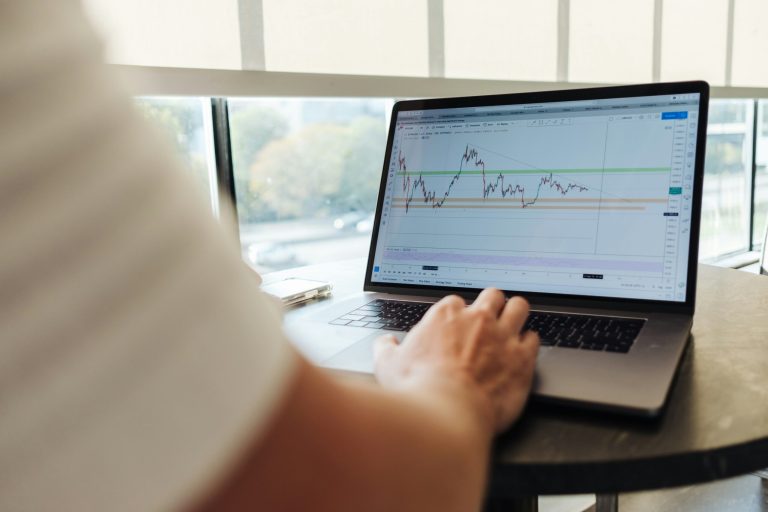Archer Aviation stock price has gone parabolic in the past few weeks, helped by a positive statement from Needham analysts and commercialisation hopes. The ACHR share price jumped to $6.22 on Friday, its highest level since December 2023 and 120% above its lowest level in October.
Archer Aviation stock is about to form a golden cross
Technically, there are signs that the ACHR share price will continue doing well in the coming months.
The most significant catalyst is that the stock is about to form a golden cross pattern, which is a rare event when the 50-day and 200-day moving averages cross each other.
In this case, the 50-day EMA stands at $3.83, while the 200-day EMA is at $3.94 and the spread is narrowing by the day.
Indeed, a golden cross has already happened when you consider the Weighted Moving Average (WMA), which is usually more responsive than the EMA.
Archer Aviation stock has risen above the important resistance level at $5.57, its highest level in July, and the neckline of the slanted double-bottom pattern at around $3. A double-bottom is one of the most bullish reversal patterns in the market.
Archer Aviation shares have the momentum as the Average Direction Index (ADX) has jumped to 42. The Relative Strength Index (RSI) and the MACD indicators have all pointed upwards in the past few months.
Therefore, there is a likelihood that the stock will continue rising in the coming weeks as bulls target last year’s high of $7.50, which is about 24% above the current level. For this bullish view to happen, the stock will need to rise above the key resistance point at $6.22, its highest level on Friday.
Such a move will invalidate the doji pattern that has formed. A doji is made up of a small body and long upper and lower shadows and is a sign that an asset opened and closed at the same price. It is one of the most popular bearish reversal signs.
In line with the doji candlestick, there is a likelihood that the stock will form a break and retest pattern, where it retests the support at $5.47 and then resumes the uptrend.
Read more: Joby and Archer Aviation shares soar after new Buy ratings but patience key for those stocking up
ACHR has made progress
Archer Aviation stock has jumped after the company made substantial progress as it matches towards commercialisation of its EVTOL aircraft in either 2025 or 2026.
It is about to complete building of its manufacturing facility, which will be used to build its piloted aircraft for more testing and early commercialisation.
The company is also nearing the completion of Phase 3 of its FAA certification, which will be followed by the final phase. If this happens, it will make Archer Aviation one of the earliest companies to receive these documents from the FAA.
Archer Aviation has already made several deals that will help it become a leader in the eVTOL space. Most recently, it reached a deal with Soracle, a joint venture between Japan Airlines and Sumitomo Corporation. The venture will make an order worth about $500 million, bringing Archer’s order book to $6 billion.
Archer Aviation has also raised cash from Stellantis, the parent company of Jeep and Chrysler. These funds will go a long way in helping it deal with the manufacturing, R&D, and certification process.
Most importantly, Stellantis will support it in the manufacturing process by providing the needed cash. It will then receive compensation by newly issued shares by the company, a sign that it sees immense value.
Read more: Archer Aviation: risk/reward analysis for this flying car stock
Archer faces major headwinds
Still, the biggest challenge the company faces is whether there will be sufficient demand for its aircraft in the long term. The other key issue is whether the company will continue diluting its shareholders as it has done in the past. Its outstanding shares have jumped from about 50 million in 2021 to over 383 million today.
History shows that new disruptive companies take a long time to become profitable. Three examples of this are companies like Rivian, VinFast, and Lucid Group, which are well-known bands in the electric vehicle industry. The three firms have continued to incinerate billions of dollars, leading to their bailouts.
The most recent results showed that Archer Aviation’s costs and losses continued rising in the last quarter. Its operating expenses jumped to $122 million, leading to a net loss of over $115 million. The net loss was much higher than the $106 million it shed in the last quarter and the $51 million it had in the same period last year.
The company ended the quarter with $501 million, meaning that it will need additional cash in 2023 since its expenses are still high.
Still, the Archer Aviation stock price may continue to do well as investors anticipate more revenues when its commercialisation process starts.
The post Archer Aviation stock to form a rare positive pattern: what next? appeared first on Invezz










